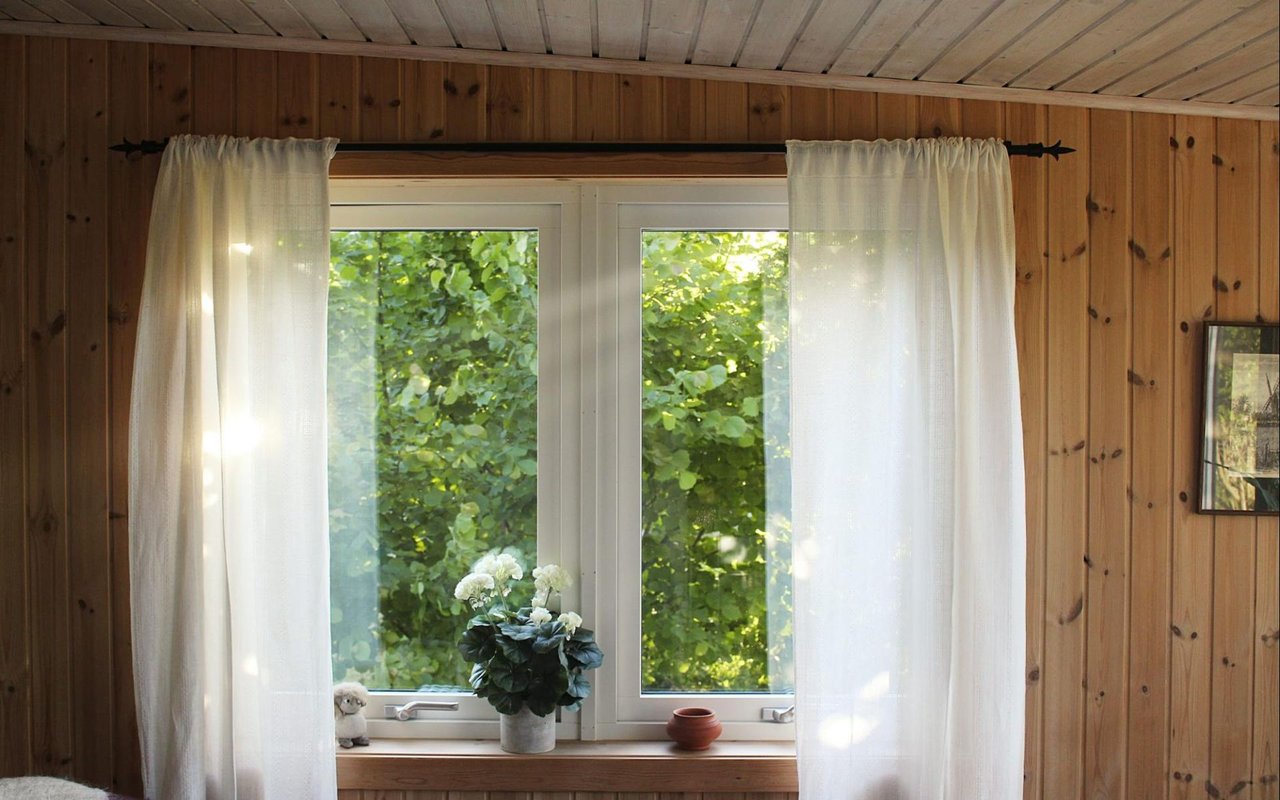When you walk into your home, you want to feel refreshed, not stuffy or weighed down by unseen particles lingering in the air. The quality of the air you breathe inside your home plays a major role in your overall well-being, comfort, and even productivity. Yet, it’s one of the most overlooked aspects of home maintenance.
The good news is that improving your air quality doesn’t always require a complete renovation or complicated systems. You can make a meaningful difference with a few thoughtful changes and consistent habits. Here’s how you can make a big impact through smart, manageable steps.
The Impact of Air Quality
From invisible allergens to airborne chemicals, the pollutants that circulate through your home often go unnoticed until they cause problems. Dust, mold spores, off-gassing materials, and even everyday cooking can quietly degrade the air you breathe.
If you’ve ever experienced dry eyes, lingering coughs, or headaches without a clear source, indoor air may be the culprit. That’s why taking a proactive approach to improve your home’s air quality can lead to better sleep, clearer thinking, and a more inviting space for both you and your guests.
If you’ve ever experienced dry eyes, lingering coughs, or headaches without a clear source, indoor air may be the culprit. That’s why taking a proactive approach to improve your home’s air quality can lead to better sleep, clearer thinking, and a more inviting space for both you and your guests.
Identify Common Indoor Pollutants
Before you can improve your indoor air quality, it’s important to understand what might be compromising it in the first place. Common household pollutants include dust mites, pet dander, mold, pollen, and volatile organic compounds (VOCs). VOCs are released by many products you use every day, such as paints, cleaning agents, furniture finishes, and even air fresheners. When these compounds build up over time, they can cause respiratory irritation and long-term health effects.
Another common issue is poor ventilation. Without enough airflow, pollutants become trapped and recirculate throughout your space. Moisture from bathrooms, kitchens, or humid climates can add to the problem by creating an ideal environment for mold and mildew. Identifying the root causes in your own home requires paying attention to how you feel in different rooms and taking note of any persistent odors, condensation on windows, or unusual dust buildup.
Once you’re aware of what might be affecting your air quality, you can take targeted steps to remove or reduce those pollutants. Identifying the sources helps you avoid chasing symptoms and, instead, create lasting improvements that make your home a healthier place to spend time.
Another common issue is poor ventilation. Without enough airflow, pollutants become trapped and recirculate throughout your space. Moisture from bathrooms, kitchens, or humid climates can add to the problem by creating an ideal environment for mold and mildew. Identifying the root causes in your own home requires paying attention to how you feel in different rooms and taking note of any persistent odors, condensation on windows, or unusual dust buildup.
Once you’re aware of what might be affecting your air quality, you can take targeted steps to remove or reduce those pollutants. Identifying the sources helps you avoid chasing symptoms and, instead, create lasting improvements that make your home a healthier place to spend time.
Start With Better Ventilation
Improving ventilation is one of the most effective ways to refresh your indoor air. Your home needs a regular exchange of indoor and outdoor air to help flush out pollutants and keep humidity in check.
On mild days, simply opening the windows for 10 to 15 minutes can make a noticeable difference. Cross-ventilation — opening the windows on opposite sides of your home — helps promote airflow and removes stale air more efficiently.
If your home doesn’t have built-in ventilation systems, you may want to explore mechanical options, such as exhaust fans in kitchens and bathrooms or a whole-house ventilator. Kitchen range hoods that vent to the outside can reduce cooking fumes, while bathroom fans help manage moisture and prevent mold growth.
Another simple improvement is to use ceiling fans and portable fans to move air more consistently throughout the house. Stagnant air allows particles to settle and collect, while circulation helps prevent buildup. Combined with other air-quality efforts, proper ventilation serves as your foundation for a cleaner, more breathable environment.
On mild days, simply opening the windows for 10 to 15 minutes can make a noticeable difference. Cross-ventilation — opening the windows on opposite sides of your home — helps promote airflow and removes stale air more efficiently.
If your home doesn’t have built-in ventilation systems, you may want to explore mechanical options, such as exhaust fans in kitchens and bathrooms or a whole-house ventilator. Kitchen range hoods that vent to the outside can reduce cooking fumes, while bathroom fans help manage moisture and prevent mold growth.
Another simple improvement is to use ceiling fans and portable fans to move air more consistently throughout the house. Stagnant air allows particles to settle and collect, while circulation helps prevent buildup. Combined with other air-quality efforts, proper ventilation serves as your foundation for a cleaner, more breathable environment.
Use Air Purifiers Strategically
Air purifiers are valuable tools when you want targeted filtration in specific rooms or areas of your home. These devices work by pulling in surrounding air and passing it through filters designed to trap particles like dust, pollen, and pet hair.
High-efficiency particulate air (HEPA) filters are particularly effective, capturing up to 99.97% of particles as small as 0.3 microns. In homes with pets or allergies, air purifiers with HEPA filters can provide much-needed relief.
If you're choosing an air purifier, consider the size of the room you’re using it in. A unit that’s too small may run continuously without making much difference. Look for models with clean air delivery rate (CADR) ratings appropriate for your square footage. Some units also include activated carbon filters to absorb odors and gases, which can be helpful in kitchens or rooms with new furniture or flooring.
Place purifiers in high-traffic areas, such as living rooms, bedrooms, or home offices, where you spend the most time. They’re also effective in nurseries or guest rooms. Run them continuously or set them on timers to operate when you’re most likely to be present. Keep the filters clean and replace them as recommended to ensure continued performance.
High-efficiency particulate air (HEPA) filters are particularly effective, capturing up to 99.97% of particles as small as 0.3 microns. In homes with pets or allergies, air purifiers with HEPA filters can provide much-needed relief.
If you're choosing an air purifier, consider the size of the room you’re using it in. A unit that’s too small may run continuously without making much difference. Look for models with clean air delivery rate (CADR) ratings appropriate for your square footage. Some units also include activated carbon filters to absorb odors and gases, which can be helpful in kitchens or rooms with new furniture or flooring.
Place purifiers in high-traffic areas, such as living rooms, bedrooms, or home offices, where you spend the most time. They’re also effective in nurseries or guest rooms. Run them continuously or set them on timers to operate when you’re most likely to be present. Keep the filters clean and replace them as recommended to ensure continued performance.
Maintain HVAC Systems Regularly
Your home’s heating, ventilation, and air conditioning (HVAC) system plays a central role in indoor air quality. When the filters are dirty or the ducts are filled with dust and debris, your system can circulate pollutants throughout every room. That’s why regular HVAC maintenance is a must — not only for efficiency but for cleaner air.
Start by changing or cleaning the filters every 1–3 months, depending on the type of filter and how often your system runs. High-efficiency filters rated MERV 11 or higher can capture smaller particles, but make sure your system is compatible before upgrading. It’s also a good idea to schedule professional inspections annually to check for mold, leaks, and other issues.
Start by changing or cleaning the filters every 1–3 months, depending on the type of filter and how often your system runs. High-efficiency filters rated MERV 11 or higher can capture smaller particles, but make sure your system is compatible before upgrading. It’s also a good idea to schedule professional inspections annually to check for mold, leaks, and other issues.
Incorporate Houseplants With Purpose
Houseplants do more than beautify your space; they can contribute to better air quality, too. Certain plants help absorb carbon dioxide and release oxygen, creating a more refreshing indoor environment. While they may not replace mechanical filtration, plants can support your efforts and provide natural appeal in every room.
Some of the most effective air-improving plants include snake plants, peace lilies, spider plants, and pothos. These species are relatively low-maintenance and have been studied for their ability to reduce VOCs in controlled environments. Adding greenery to your home can also reduce stress, improve mood, and boost productivity — indirect benefits that enhance your living space.
Be mindful of the number and location of your plants. Too many plants in a humid area can lead to moisture buildup and even mold in the soil. Use well-draining pots, avoid overwatering, and clean leaves regularly to prevent dust accumulation. A few strategically placed plants can balance aesthetics with function, giving your home a more vibrant and breathable atmosphere.
Some of the most effective air-improving plants include snake plants, peace lilies, spider plants, and pothos. These species are relatively low-maintenance and have been studied for their ability to reduce VOCs in controlled environments. Adding greenery to your home can also reduce stress, improve mood, and boost productivity — indirect benefits that enhance your living space.
Be mindful of the number and location of your plants. Too many plants in a humid area can lead to moisture buildup and even mold in the soil. Use well-draining pots, avoid overwatering, and clean leaves regularly to prevent dust accumulation. A few strategically placed plants can balance aesthetics with function, giving your home a more vibrant and breathable atmosphere.
Reduce Sources Of VOCs
Volatile organic compounds are some of the most common — and often invisible — pollutants in a home. They’re released from everyday products, including paints, cleaning supplies, adhesives, synthetic fabrics, and even candles. Reducing your exposure starts with choosing low-VOC or VOC-free versions of products whenever possible.
When bringing in new furniture or flooring, check whether it has been treated with formaldehyde or other chemicals. Allow off-gassing to occur outside or in a well-ventilated room before using the space regularly. Avoid synthetic air fresheners, which often contain a host of VOCs, and opt instead for essential oil diffusers or natural sprays made from plant-based ingredients.
You can also reduce VOC exposure by storing paints, solvents, and chemicals in tightly sealed containers and keeping them in garages or outdoor sheds. The fewer chemicals you allow to accumulate indoors, the better your baseline air quality will be.
When bringing in new furniture or flooring, check whether it has been treated with formaldehyde or other chemicals. Allow off-gassing to occur outside or in a well-ventilated room before using the space regularly. Avoid synthetic air fresheners, which often contain a host of VOCs, and opt instead for essential oil diffusers or natural sprays made from plant-based ingredients.
You can also reduce VOC exposure by storing paints, solvents, and chemicals in tightly sealed containers and keeping them in garages or outdoor sheds. The fewer chemicals you allow to accumulate indoors, the better your baseline air quality will be.
Control Humidity Levels
Humidity has a direct impact on air quality and comfort. Too much moisture in the air creates ideal conditions for mold, mildew, and dust mites, whereas air that’s too dry can lead to irritated sinuses, dry skin, and cracked wood surfaces. Finding the right balance helps you breathe easier and protects your home from structural damage.
Ideal indoor humidity levels typically fall between 30% and 50%. In humid climates like Poipu, dehumidifiers can remove excess moisture and prevent condensation from forming on windows and walls. Keep the unit clean, and monitor humidity levels with a hygrometer to stay within the ideal range. A balanced environment not only feels better but keeps airborne irritants at bay.
Ideal indoor humidity levels typically fall between 30% and 50%. In humid climates like Poipu, dehumidifiers can remove excess moisture and prevent condensation from forming on windows and walls. Keep the unit clean, and monitor humidity levels with a hygrometer to stay within the ideal range. A balanced environment not only feels better but keeps airborne irritants at bay.
Breathe Better Every Day
Ultimately, the air in your home shapes your mood, energy, and health more than you might realize. With mindful choices and a commitment to cleaner habits, you can transform your space into a fresher, healthier retreat. When the air feels lighter, so does everything else.
If you’re seeking a beautiful, refreshing space to call your own, Ilona Coffey is ready to help you find the perfect home in Poipu. Reach out today.
If you’re seeking a beautiful, refreshing space to call your own, Ilona Coffey is ready to help you find the perfect home in Poipu. Reach out today.




